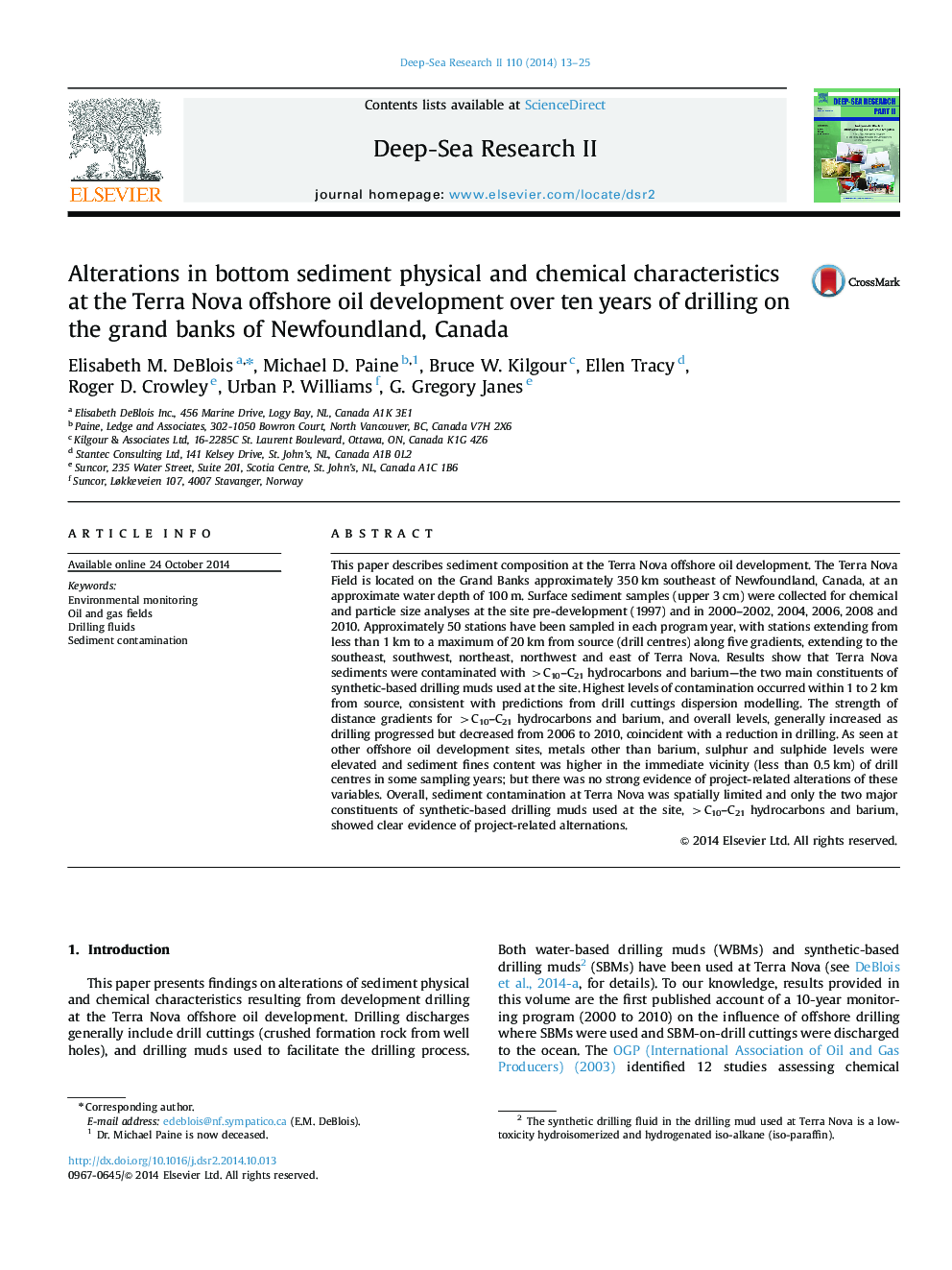| Article ID | Journal | Published Year | Pages | File Type |
|---|---|---|---|---|
| 4536222 | Deep Sea Research Part II: Topical Studies in Oceanography | 2014 | 13 Pages |
This paper describes sediment composition at the Terra Nova offshore oil development. The Terra Nova Field is located on the Grand Banks approximately 350 km southeast of Newfoundland, Canada, at an approximate water depth of 100 m. Surface sediment samples (upper 3 cm) were collected for chemical and particle size analyses at the site pre-development (1997) and in 2000–2002, 2004, 2006, 2008 and 2010. Approximately 50 stations have been sampled in each program year, with stations extending from less than 1 km to a maximum of 20 km from source (drill centres) along five gradients, extending to the southeast, southwest, northeast, northwest and east of Terra Nova. Results show that Terra Nova sediments were contaminated with >C10–C21 hydrocarbons and barium—the two main constituents of synthetic-based drilling muds used at the site. Highest levels of contamination occurred within 1 to 2 km from source, consistent with predictions from drill cuttings dispersion modelling. The strength of distance gradients for >C10–C21 hydrocarbons and barium, and overall levels, generally increased as drilling progressed but decreased from 2006 to 2010, coincident with a reduction in drilling. As seen at other offshore oil development sites, metals other than barium, sulphur and sulphide levels were elevated and sediment fines content was higher in the immediate vicinity (less than 0.5 km) of drill centres in some sampling years; but there was no strong evidence of project-related alterations of these variables. Overall, sediment contamination at Terra Nova was spatially limited and only the two major constituents of synthetic-based drilling muds used at the site, >C10–C21 hydrocarbons and barium, showed clear evidence of project-related alternations.
